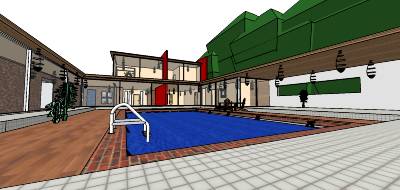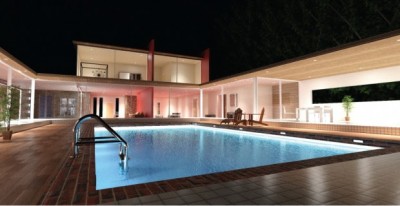The Australian visualization group also now controls the destiny of RealityServer and iRay.
Migenius and its SketchUp add-in Bloom Unit first came on the scene at Nvidia’s GTC conference in 2012, showing off interactive real-time photo-realistic rendering inside SketchUp, then viewable in any device. In 2012 they said shipping was imminent, but one thing led to another and Bloom Unit did not launch until April 2013. Behind the scenes Migenius was also juggling their new responsibilities maintaining Nvidia’s RealityServer (originally acquired by Nvidia in the Mental Images acquisition). “We were a little early, talking about cloud-based [real-time photo-realistic] rendering in 2012,” says Migenius CEO Paul Arden. “We were overly optimistic.”

But a year has passed for people to get more comfortable with the idea of cloud-based photo-realistic rendering, and Arden says he is happy with the decision to have their first retail product run on SketchUp. “SketchUp has amazing reach,” notes Arden. “It is incredibly popular for concept design.” Sales have averaged 1,000 units a month since launch in April. A new partnership with Polish architectural visualization and 3D model specialist Evermotion will deliver render-ready 3D models of all the small items designers need to populate architectural models, store displays, and other complex consumer-facing visualization tasks. Evermotion has attracted a global audience and positive reviews from the architecture press in recent years; it is a feather in the cap for Bloom Unit to gain their confidence.
A unique advantage in the Bloom Unit-Evermotion partnership is the use of proxy objects to speed rendering tasks. Because rendering is done on the server, the cherished intellectual property of the Evermotion models can stay on the server, and only the rendered image transferred to the model in SketchUp. It also means 50 instances of a lamp can be rendered using only the original back at the server. “Not everyone has great bandwidth,” notes Arden. “This speeds things up nicely.” For now Bloom Unit is making a select number of Evermotion models available for free, to whet the appetite. Details on pricing will come after they get a better feel for how Bloom Unit users take advantage of the service.

RealityServer and iRay are the technology behind the Bloom Unit curtain, and Arden remains confident RealityServer will emerge as a long-term answer to retail’s need for real-time visualization in the emerging world of mass customization. A couple of Australian retail companies are already using RealityServer to generate retail images; Arden says they are part of a larger customer base generating “tens of thousands of RealityServer hours per month,” on Amazon Web Services (AWS). Arden wishes AWS would be more granular (charge by the minute instead of the hour) and more willing to deliver GPU access. Right now two GPUs are the max available for a job, while they could use eight per job if available. “We are ready but the hardware side of the cloud is not.” Arden claims using only CPUs for rendering on AWS would be four times more expensive than using GPUs if the hardware were available.






